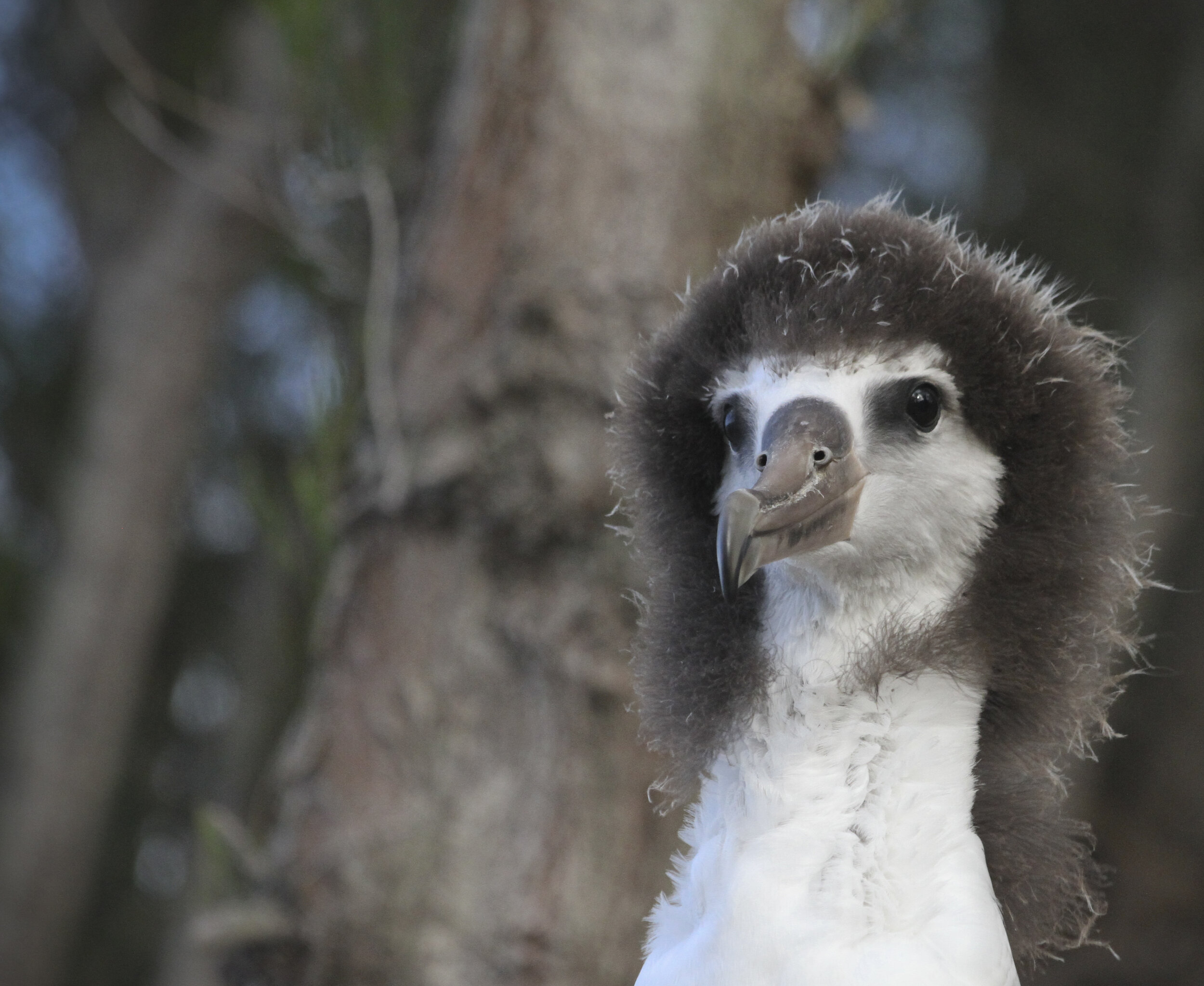SEABIRDS
Wetland Birds
Albatross (Mōlī)
HONU
WHALES & DOLPHINS
SHOREBIRDS
MONK seals
Forest Birds
SMALL FISH & CORAL
Insects
bats
PUEO
Learn best practices for responsible wildlife viewing.
Click the button below for more information.

- Fledging shearwater chicks are attracted to bright lights. Please keep outdoor lights off in season Sept-Dec
- Plastics often end up in the oceans. Please use refillable water bottles and avoid using single-use plastics
- Feral cats kill native birds and spread toxoplasmosis in their poop. Please avoid feeding them
- Party balloons are hazards to seabirds. Please use an alternative
- Report injuries to Save Our Shearwaters: 808-635 5117
- Learn more about Native Hawaiian Seabirds here and here
- Seabird Friendly Lighting https://dlnr.hawaii.gov/wildlife/files/2016/03/DOC439.pdf
Photo: 'Iwa (Frigatebird) ©Hob Osterlund
- Please avoid feeding the nēnē geese
- Feral cats kill native birds and spread toxoplasmosis in their poop. Please avoid feeding them
- Learn more about Native Hawaiian Wetland Birds here
Photo: Koloa (Hawaiian Duck) ©Hob Osterlund

- Keep your dog on a leash
- Plastics often end up in the oceans. Please use refillable water bottles and avoid using single-use plastics
- Feral cats kill native birds and spread toxoplasmosis in their poop. Please avoid feeding them
- Party balloons are hazards to Mōlī. Please choose an alternative
- Report injuries to Save Our Shearwaters: 808-635 5117
- Learn more about Native Hawaiian Seabirds here
Photo: Mōlī (Laysan albatross) ©Hob Osterlund
- Avoid approaching Honu within 20 feet
- Plastics often end up in the oceans. Please use refillable water bottles and avoid using single-use plastics
- Cat poop carries toxoplasmosis, which kills marine life. Please avoid feeding feral cats
- Party Balloons are hazards to turtles. Please choose an alternative
- Report injuries and entanglements to NOAA Fisheries Marine Mammal Hotline: 888-256-9840
- Learn more about Native Hawaiian turtles here
Photo: Honu (Green Sea Turtle) ©Hob Osterlund
- Avoid approaching whales and dolphins. Stay at least 100 yards away from whales and 50 yards away from dolphins
- Plastics often end up in the ocean. Please use refillable water bottles and avoid using single-use plastics
- Party Balloons are hazards to whales and dolphins. Please choose an alternative
- Report stranded, entangled, injured whales and dolphins to NOAA Fisheries Marine Mammal Hotline: 888-256-9840. Learn more about fishing gear and plastics in the ocean here.
- Learn more about Native Hawaiian whales and dolphins
Photo: Kuapio Kohola (Humpback Whale) ©Hob Osterlund
- Plastics often end up in the oceans. Please use refillable water bottles and avoid using single-use plastics
- Feral cats kill native birds and spread toxoplasmosis in their poop. Please avoid feeding them
- Balloons often end up in the ocean. Please avoid releasing them
- Report injuries to Save Our Shearwaters: 808-635-5117
- Learn more about Native Hawaiian Shorebirds here
Photo: Kolea (Pacific Golden Plover) ©Hob Osterlund
- Avoid approaching within 50 feet for adults and 150 feet for moms with pups
- Plastics often end up in the oceans. Please use refillable water bottles and avoid using single-use plastics
- Party Balloons are hazards to monk seals. Please choose an alternative
- Report sightings to Monk Seal Hotline: 808-651-7668
- Report stranded, entangled, or injured seals to NOAA Fisheries Marine Mammal Hotline: 888-256-9840
- Learn more about Native Hawaiian Seals here and here
Photo: llio-holo-i-ka-uaua (Hawaiian Monk Seal) ©Hob Osterlund
- Mosquitoes kill forest birds. Please empty or cover all containers of standing water
- Help prevent Rapid Ohiʻa Death (ROD); learn more here
- Feral cats kill native birds and spread toxoplasmosis in their poop. Please avoid feeding them
- Learn more about Native Hawaiian Forest Birds here
Photo: ʻIʻiwi (Scarlet Honeycreeper). ©Hob Osterlund
- Do not feed or collect fish or corals
- Use coral-friendly sunscreens, which you can find here
- Plastics often end up in the oceans. Please use refillable water bottles and avoid using single-use plastics
- Party Balloons are hazards to monk seals. Please choose an alternative
- Learn more about Native Hawaiian corals here
Photo: Palani (Dussumier’s Surgeonfish) ©Andre Raine

- Our two native butterflies are Blackburn’s Blue “pictured” and the Pulelehua (Kamehameha Butterfly)
- Kauai has native and introduced dragonflies, damselflies and butterflies.
- Damselflies mostly hold their wings close to the body and are weak fliers
- Dragonflies are strong fliers, and at rest hold their wings away from the body
- The Hawaiian giant dragonfly is the largest in the USA with a 6” wingspan.
- To find out more click here
- Artistic rendering of Blackburnʻs Blue butterfly by Sheldon Plentovich
IG @sheldorofthehillpeople
- Bats get caught in barbed wire. Please avoid using a top strand of barbed wire on fences
- Report injured bats to Save Our Shearwaters at 808-635-5117
- Learn more about Native Hawaiian Bats here
Photo: ʻŌpeʻapeʻa (Hawaiian Hoary Bat). ©Jack Jeffrey
-Report a Pueo sighting to https://www.pueoproject.com/
Photo: Pueo (Hawaiian Owl) ©Hob Osterlund
Learn best practices for responsible wildlife viewing.
Click the button below for more information.